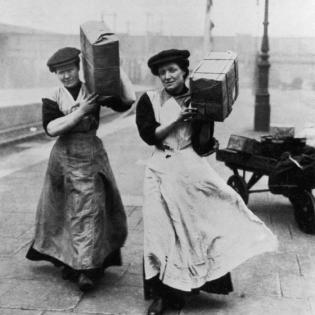Women of the Industrial Era
What can we learn from diverse people today and in history about private action for the common good?
Photo Credit: Women on the Home Front in World War One by Paul Townsend is licensed under CC by 2.0
In this unit, young people learn about the role of community-minded and philanthropic women in the Industrial Revolution. They learn about the efforts of Sojourner Truth, Elizabeth Cady Stanton, Susan B. Anthony, and Clara Barton who used their time, talent, treasure, and influence to empower the voices of women and promote health and wellness for all.
This lesson gives an overview of the nineteenth century Industrial Revolution, and the major changes to how people live and work. Young people learn about the key inventions and changes that shifted focus from people and their skills to big machines and systems of mass production. The systems improved life in some ways and also decreased safety and personal power of workers. This sets the stage for the following lessons that focus on people who fought for the rights of people.
Sojourner Truth's contributions to abolitionism and women's suffrage are revealed through her own words. She worked tirelessly to aid the freed men after the Civil War and brought increased recognition to their plight. We discuss the right of all voices to be heard in a democracy and determine how Sojourner Truth's work was philanthropic.
We learn about Elizabeth Cady Stanton and her leadership of the woman's suffrage movement. At the time it was hard for some people to see that women deserved equality or that change was possible, but her persistence and organization techniques helped raise awareness and involvement.
This lesson is designed to expnd awareness about the famous suffragist Susan B. Anthony. Although she is best known for this role, she was active in six different causes as an abolitionist, educational reformer, labor activist, temperance worker, suffragist, and women's rights campaigner.
This lesson explores the contributions made by Clara Barton as a nurse and founder of the American Red Cross. Her work is an example of the women from the Industrial Era making a difference through contributions to society. This lesson incorporates a service project connecting youth to the Red Cross.
